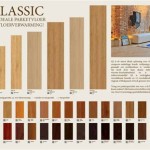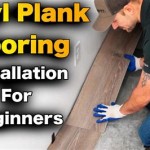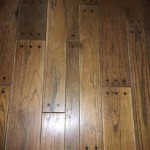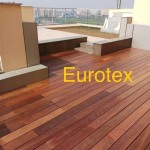Engineered Tigerwood Flooring: A Comprehensive Overview
Engineered tigerwood flooring presents a compelling option for homeowners and builders seeking a combination of aesthetic appeal, durability, and relative affordability. Tigerwood, also known as Goncalo Alves, is a hardwood prized for its distinctive grain patterns and rich coloration. However, solid tigerwood flooring can be expensive and susceptible to environmental fluctuations. Engineered tigerwood flooring addresses these concerns by utilizing a layered construction that enhances stability and reduces material costs, while still showcasing the desirable attributes of the genuine wood species.
This article will provide a comprehensive overview of engineered tigerwood flooring, covering its construction, benefits, maintenance, and considerations for choosing the right product for a specific application. The objective is to offer a detailed understanding of engineered tigerwood flooring, empowering informed decisions regarding its suitability for various flooring projects.
Construction of Engineered Tigerwood Flooring
The fundamental principle of engineered flooring lies in its multi-layered construction. Unlike solid wood flooring, which is composed of a single piece of lumber, engineered flooring consists of multiple layers bonded together. This layering technique contributes significantly to the flooring's structural integrity and resistance to warping or cupping, especially in environments with varying humidity levels.
Engineered tigerwood flooring typically comprises three to five layers. The top layer, known as the veneer or wear layer, is a thin slice of genuine tigerwood. The thickness of this layer is a critical factor in determining the flooring's longevity and its ability to withstand refinishing. A thicker wear layer allows for more sanding and refinishing over the floor's lifespan, effectively extending its use. Veneer thicknesses can range from less than 1mm to over 6mm, with thicker veneers commanding a higher price point.
Beneath the veneer lies the core, which provides the structural foundation of the plank. The core is usually composed of multiple layers of plywood, hardwood, or high-density fiberboard (HDF), arranged in a cross-grain configuration. This cross-graining is crucial for stability, as it minimizes the natural expansion and contraction of wood in response to changes in temperature and humidity. High-quality engineered flooring often utilizes hardwood or multi-plywood cores, offering superior dimensional stability and resistance to moisture compared to HDF cores.
The bottom layer, often referred to as the backing, serves as a stabilizer and helps to prevent moisture from penetrating the core. This layer is typically made of a wood veneer or a resin-impregnated paper. Its primary function is to provide a balanced and stable base for the entire plank.
The bonding process between these layers is equally important. High-quality adhesives are used to permanently bond the layers together under pressure and heat. The type and quality of adhesive used significantly impact the durability and overall performance of the engineered flooring. Formaldehyde-free adhesives are often preferred to minimize off-gassing and promote indoor air quality.
Key Advantages of Choosing Engineered Tigerwood Flooring
Engineered tigerwood flooring offers several advantages over solid tigerwood flooring and other flooring options. These benefits stem from its unique construction and the inherent properties of tigerwood itself.
Firstly, dimensional stability is a significant advantage. The layered construction, with its cross-grain core, makes engineered tigerwood flooring much less susceptible to warping, cupping, and gapping compared to solid wood. This is particularly important in regions with fluctuating humidity levels or in installations below grade (e.g., basements) where moisture is a concern.
Secondly, cost-effectiveness is a major consideration for many buyers. Engineered tigerwood flooring is generally more affordable than solid tigerwood flooring because it utilizes less of the expensive tigerwood material. The core layers are typically made of less expensive wood species or composite materials, allowing for a more economical price point without sacrificing the aesthetic appeal of the tigerwood surface.
Thirdly, installation flexibility is enhanced. Engineered flooring can be installed using various methods, including gluing, nailing, or floating. Floating installations, where the planks are clicked together without being attached to the subfloor, are particularly convenient and can often be done as a DIY project. This versatility makes engineered tigerwood flooring suitable for a wider range of subfloors and installation environments.
Fourthly, environmental friendliness can be a factor. Engineered flooring uses less of the precious tigerwood resource compared to solid wood flooring. Furthermore, some manufacturers utilize sustainable harvesting practices and recycled content in the core layers of their engineered flooring products, contributing to a more environmentally responsible choice. Look for certifications like Forest Stewardship Council (FSC) to ensure responsible sourcing.
Fifthly, tigerwood's natural beauty is preserved. The top veneer of engineered tigerwood flooring showcases the distinctive grain patterns and rich, reddish-brown coloration that make tigerwood so desirable. The natural variations in color and grain create a unique and visually appealing floor that adds warmth and character to any space.
Maintenance and Care Considerations
Proper maintenance and care are essential for preserving the beauty and extending the lifespan of engineered tigerwood flooring. Regular cleaning and preventative measures can help protect the floor from wear and tear, scratches, and moisture damage.
Regular cleaning should include sweeping or vacuuming with a soft brush attachment to remove dirt, dust, and debris. Avoid using vacuums with beater bars, as they can scratch the surface of the flooring. For deeper cleaning, use a manufacturer-recommended cleaning solution specifically designed for engineered wood floors. Avoid using excessive water, as it can seep into the seams and damage the core layers.
Preventative measures are equally important. Place mats at entrances to trap dirt and moisture before they are tracked onto the floor. Use felt pads under furniture legs to prevent scratches and dents. Avoid wearing shoes with high heels or cleats on the flooring. Clean up spills immediately to prevent staining or water damage. Control humidity levels in the home to minimize expansion and contraction of the flooring.
Refinishing is possible with engineered tigerwood flooring, but it depends on the thickness of the wear layer. If the wear layer is thick enough, the floor can be sanded and refinished to remove scratches, dents, and wear marks. However, thinner wear layers may only allow for one or two refinishing cycles. Consult with a flooring professional to determine if refinishing is an option for your specific engineered tigerwood flooring product.
For heavily trafficked areas or areas prone to spills, consider applying a protective coating or sealant to the flooring. This can provide an extra layer of protection against wear, scratches, and moisture damage. Choose a sealant that is compatible with engineered wood floors and follow the manufacturer's instructions carefully.
Avoid using harsh chemicals, abrasive cleaners, or scouring pads on engineered tigerwood flooring. These products can damage the finish and dull the surface of the wood. Stick to mild, pH-neutral cleaning solutions specifically designed for engineered wood floors.
By following these maintenance and care guidelines, you can ensure that your engineered tigerwood flooring remains beautiful and durable for many years to come. Regular cleaning, preventative measures, and occasional refinishing (if possible) will help protect your investment and maintain the value of your home.
In conclusion, engineered tigerwood flooring offers a compelling blend of aesthetic appeal, durability, and affordability. Its layered construction provides enhanced stability and resistance to moisture, while the genuine tigerwood veneer showcases the natural beauty of this exotic hardwood. Proper maintenance and care will ensure the longevity and lasting beauty of engineered tigerwood flooring, making it a worthwhile investment for any home.

Tigerwood Prefinished Engineered Hardwood Flooring Floor Depot

4 3 X 1 2 Tigerwood Prefinished Engineered Hurst Hardwoods

4 3 X 1 2 Tigerwood Prefinished Engineered Hurst Hardwoods

Tigerwood Engineered Flooring Thickness 12 Mm At Rs 150 Sq Ft In New Delhi

Tigerwood Flooring

5 X 1 2 Engineered Tigerwood Hardwood Flooring Hardwoods4less Com

Tigerwood Natural Engineered Smooth Select 1 2 X 4 3

Hurst Hardwoods 5 X 12 Tigerwood Prefinished Engineered Ubuy

4 3 X 1 2 Tigerwood Prefinished Engineered Hurst Hardwoods

Tigerwood Flooring
Related Posts








